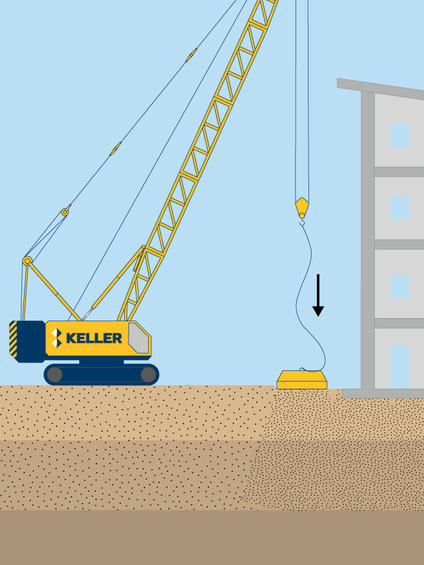Dynamic Compaction is a ground improvement technique that densifies granular materials by using a drop weight and it is applicable to both saturated and unsaturated soils. The basic principle of this technique is the transmission of high energy impacts to loose granular soil which initially have low bearing capacity and high compressibility potentials in order to significantly improve their characteristics with depth.

Common uses
Process
The ground will be subjected to repeated surface tamping using a heavy weight from a significant height. The weight and height of pounding depends on the desired degree of compaction. The pounder is dropped a set number of times on a grid pattern over the site to form a pass. Several passes may be required on a site, dependent on soil type and condition. The imprints formed at each drop position are infilled with granular material after each pass.
Advantages
Quality assurance
Typically, in situ testing by borehole or static cone penetrometer, allied with measurement of print volume and site surface settlement is performed during the dynamic deep compaction.
The treatment pattern, energy level, number of passes and phasing of passes must be designed to take into account the soil conditions, type of development and required bearing capacity and settlement characteristics. It is essential to have a thorough understanding of the soils prior to treatment, and to maintain very close control during all phases of the work. Typically, insitu testing by borehole or static cone penetrometer, allied with measurement of print volume and site surface settlement is performed during the dynamic deep compaction contract.